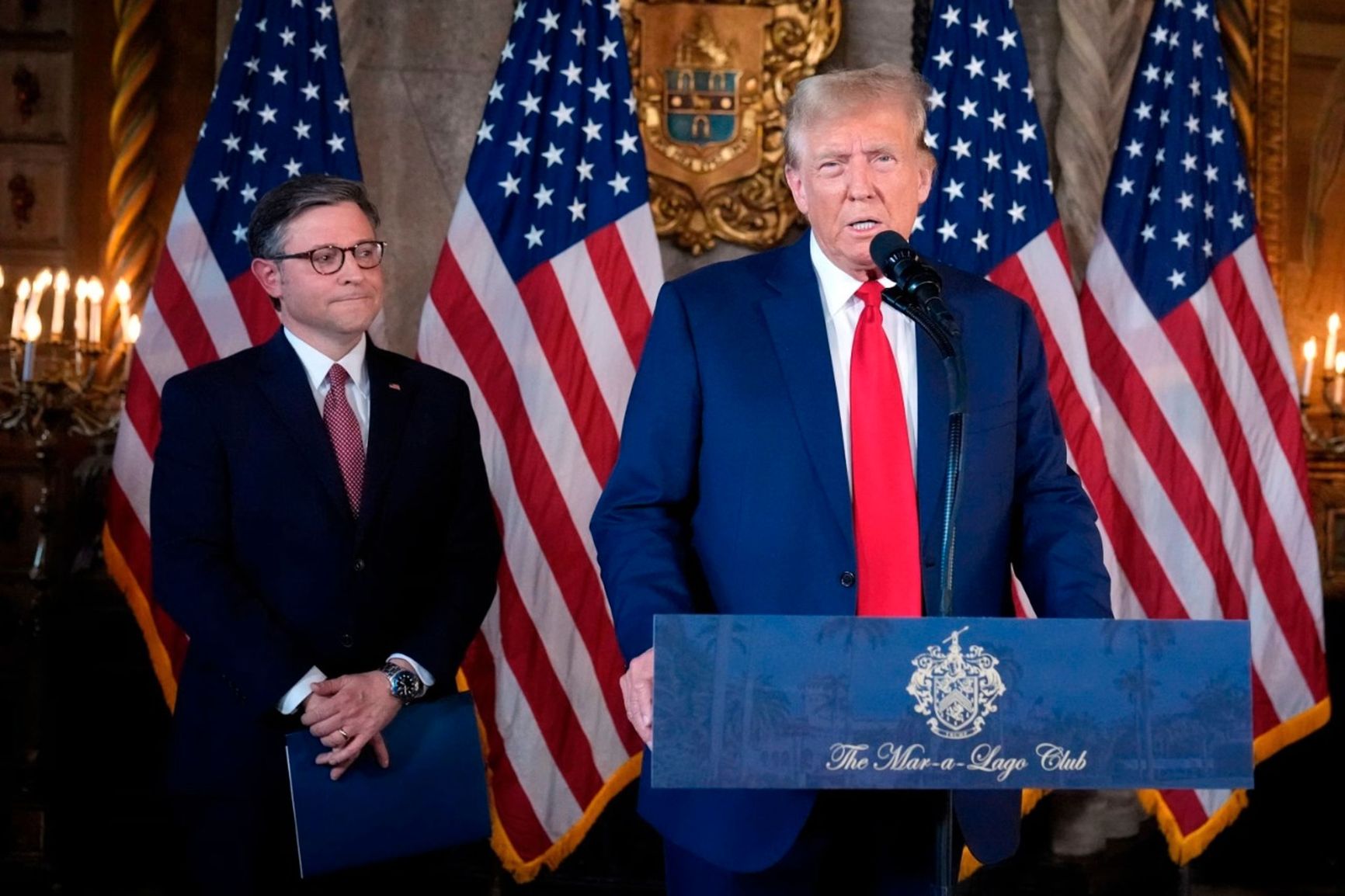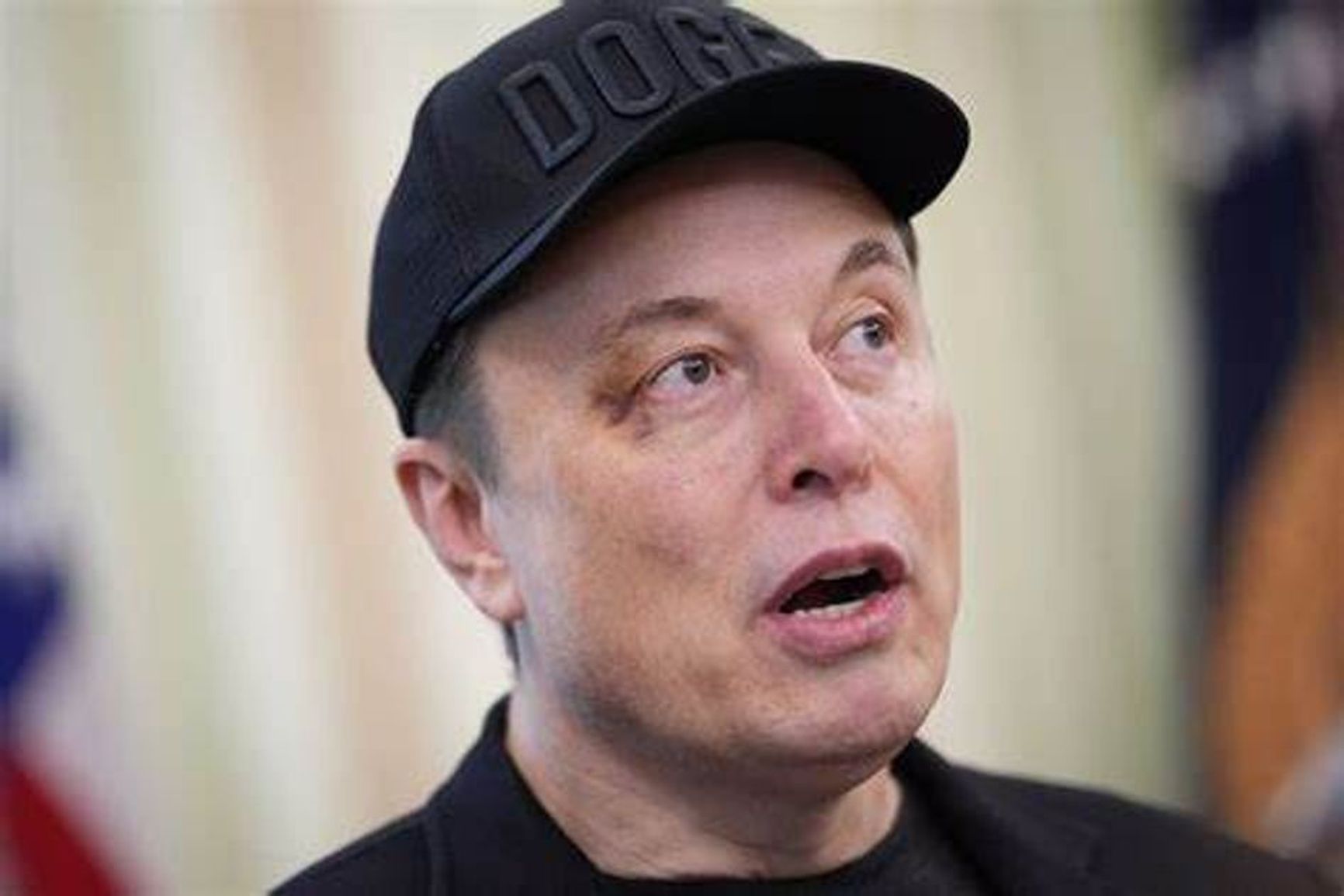
AI / The Insider

AI / The Insider
Senators have begun debating Donald Trump’s controversial “big, beautiful budget bill,” which on May 22 was approved by just one vote in the House of Representatives. The contentious proposal aims to cut taxes, slash funding for social programs, increase spending on the military and for deportations, and accelerate the growth of the national debt — all at once. The draft budget has sparked outrage not only from Democrats, but also from many Republicans. One of its most vocal public critics, Elon Musk, ultimately fell out with President Trump over the matter — despite the fact that, in its current form, the budget is unlikely to make it through the Senate.
Big promises, small loopholes
Less tax, more military spending, and a greater national debt
Party squabbles
“A disgusting abomination”
A thorny path through the Senate
During the 2024 election campaign, Donald Trump made a flurry of promises. In particular, he pledged to resist cuts to Social Security and Medicare, both of which have traditionally been targeted by Republicans — at least rhetorically. In addition, Trump promised Americans generous benefits: to extend his 2017 tax reform and to eliminate taxes on overtime pay, tips, and retirement benefits.
At the same time, Trump pledged to balance the federal budget and to begin driving down the national debt. During his first term, however, he failed to deliver on the latter promise: the debt grew at a record pace, by nearly $8.5 trillion — compared to an increase of about $4.7 trillion under Joe Biden.

However, most of Trump’s promises require input from Congress, which is responsible for approving a budget and setting tax policy. The Republican Party secured a majority in both chambers last November, if only just barely: 220 seats versus the Democrats’ 215 in the House of Representatives, and 53 seats to 47 in the Senate.
And yet even the coveted “trifecta” — control of the executive branch and both legislative chambers — has not offered the Republicans full control over the legislative process. The reason is the so-called filibuster — a procedural tactic that allows the opposition in the Senate to indefinitely delay the discussion of a bill. Ending the debate early requires 60 or more votes, which the Republicans currently do not have.
Still, Senate rules do sometimes allow for bypassing the filibuster in order to approve laws by a simple majority. This loophole is called “Reconciliation,” but the Congressional Budget Act limits its use to bills involving taxes, budgetary spending, and the national debt. For each of these areas, only one bill can be passed under the expedited process per fiscal year, although they are often combined into a single document.
Due to these limitations, the Republicans decided to squeeze most of Trump’s legislative agenda into a single bill, which took House Speaker Mike Johnson almost the entire spring to elaborate. Trump himself, in his characteristic style, dubbed it “one big, beautiful bill” — and that name eventually became official.
The bill turned out to be truly big, with the final version exceeding 1,000 pages — focused primarily on tax cuts. The extension of the tax reform enacted by the Republicans during Trump’s first term alone would cost the federal budget over $3.8 trillion in revenue over 10 years (the standard budget planning window). Further tax cuts included in the bill total about $1.5 trillion.
According to economists’ estimates, the tax cuts will increase Americans’ incomes by an average of 4.4% in 2026. The top 5% of the wealthiest taxpayers would benefit the most — largely because most of the tax benefits intended to help the poor and the middle class will only remain in effect until 2029, while the reductions in corporate and income taxes are set to be permanent.
If the bill is passed, in 2027 the incomes of the poorest 20% of Americans will increase by only 0.6% (an average of $90), while the incomes of those earning over $1 million will rise by 4.3% (nearly $90,000). By 2029, the income of the first group will drop by 0.5%, while that of the second group will increase by 3.3%. The Joint Committee on Taxation calculated that from 2027 to 2033, Americans earning less than $30,000 per year will pay $18 billion more in taxes, while those earning over $1 million per year will pay $242 billion less.
By 2029, the incomes of the poorest Americans will drop by 0.5%, while those of the wealthiest will increase by 3.3%
One way to address such inequality is by raising taxes for the wealthiest at least to the 2017 levels, but the Republicans quickly abandoned this idea — despite Trump raising it on several occasions. Moreover, the bill includes additional loopholes benefiting the most affluent taxpayers.
To make up for the loss of a significant chunk of revenue, the Republicans decided to cut social programs. Since Trump promised immunity to Social Security and Medicaid, the cuts targeted Medicare (which supports low-income individuals), subsidies for private health insurance under Obamacare, and the SNAP food assistance program (better known as “food stamps”). Overall, the social program cuts exceeded $ 1.2 trillion.
The Republicans insisted that ordinary Americans would not feel these cuts, claiming that benefits would be taken away from undocumented immigrants and those who are unwilling to work. However, according to the Congressional Budget Office, an estimated 12 million people would lose their health insurance, to say nothing of other sacrifices those living at the bottom of the income ladder would be forced to endure. Economists have estimated that the poorest 20% of Americans — those earning less than $17,000 a year — will see their average income shrink by $1,000-1,400, while the top 0.1% of earners — with incomes over $4.3 million — will receive an average increase of $389,000 post-tax in 2026.
Unlike social programs, law enforcement agencies are slated to receive a significant boost from the Republicans. In particular, Pentagon funding is set to increase by $150 billion, mostly in order to expand its unmanned systems programs: aerial kamikaze drones, sea drones, and underwater drones. The Trump administration also plans to use these funds to finance its large-scale missile defense program, the Golden Dome.
Another $70 billion will be allocated to the authorities responsible for deporting undocumented migrants. The lion’s share of these funds will go toward completing the wall on the border with Mexico, while the rest will be used to hire additional agents and expand the capacity of migrant detention centers. The goal is to create infrastructure capable of deporting up to 1 million people per year.

Since the shortfall in budget revenues due to tax cuts significantly outweighs all budget-saving measures, the bill will further increase the budget deficit. In the next decade, the U.S. national debt will rise by an additional $3.8 trillion, reaching $36.2 trillion by 2036 and exceeding 125% of the country’s GDP. Against this backdrop, Moody’s downgraded America’s credit rating, citing the bill as an example of fiscal irresponsibility.
Despite these facts, the White House still denies that the bill will increase the budget deficit, insisting that the economy will grow so rapidly that tax revenues will rise rather than fall. Similar promises were made following the passage of the 2017 tax reform during Trump’s first presidency, but they were not fulfilled. Far more telling is the provision that immediately raises the national debt ceiling by $5 trillion.
Attempts to fit numerous Republican budgetary and tax priorities — some of which contradict each other — into a single bill triggered an immediate conflict between different factions of the party.
On one side, more than 30 congressmen from the conservative Freedom Caucus were deeply displeased with the growing budget deficit and demanded more substantial cuts to social programs. They even derailed a vote on the bill in one of the key committees by siding with the Democrats, ultimately securing concessions from Speaker Johnson, who agreed not to spread the cuts over several years but to implement them immediately.
On the other hand, moderate Republicans were outraged by the cuts to funding for programs supporting low-income Americans. Some of them represent swing districts in New York and California, where many people rely on social programs, and they fear that voter dissatisfaction could cost them their seats in the 2026 midterm elections.
Some of the moderate Republicans oppose cuts to Biden’s Inflation Reduction Act. That law includes various tax incentives for manufacturers and buyers of electric vehicles and solar panels, as well as projects in the hydro and nuclear energy sectors. Republican states have benefited the most from these incentives, with the leading recipients being districts overwhelmingly represented by Republican congressmen who have been pushing to preserve the tax breaks.
Speaker Johnson skillfully navigated between moderate and conservative Republicans, trying to persuade them both to support the bill. To put pressure on the most unyielding members, he enlisted Trump, who personally called on congressmen to vote in favor. In the end, the strategy worked: out of 220 Republicans, only one voted “no,” while four others either missed the vote or abstained, allowing the bill’s supporters to secure a narrow victory — by just one vote.

After the bill was passed, some Republicans who supported it complained that they had not had the time to read it. Indeed, Johnson had promised multiple times to allow 72 hours for review, but in the end, he published this particular version just a few hours before the vote. As a result, even those who voted “yes” are now dissatisfied.
For example, Republican Congresswoman Marjorie Taylor Greene expressed outrage over the inclusion in the bill of a 10-year ban preventing state authorities from regulating artificial intelligence, saying that if she had known about it, she would have voted “no.” Her fellow party member, Mike Flood, voiced similar criticism regarding a provision that limits judges’ ability to hold violators of court orders in contempt — something that has been applied several times in recent months to Trump’s team.
The loudest critic of the bill was billionaire Elon Musk. He said he could no longer tolerate the document and called it “a disgusting abomination” — purportedly due to the rising budget deficit, which negates all of his efforts to reduce government spending. Musk urged his followers to call Republican lawmakers and demand they “kill the bill.” His words were immediately supported by several conservative congressmen and senators.
A few days earlier, Musk announced that he was leaving the Trump administration in order to devote more time to his businesses. Although the billionaire had received a key to the White House from Trump himself, it was clear that Musk's departure was forced. Shortly after, the Trump administration withdrew the nomination of Musk’s friend, billionaire Jared Isaacman, who had been tabbed to lead NASA.
After that, the conflict between Musk and Trump became public. The president stated that Musk had been fully aware of the bill’s contents but disliked the removal of subsidies for electric vehicle manufacturers, a government benefit that Musk’s Tesla currently receives. In response, the billionaire wrote that without the $275 million in financial support he had provided during the 2024 campaign, Trump would have lost the election. Musk then called for the creation of a new political party that would “represent the 80% in the middle!”

When Trump responded by calling Musk “crazy” and threatening to cancel government contracts for his companies, the billionaire announced that he planned to halt rocket launches under government contracts, then escalated the situation further by accusing the president of withholding the full dossier on pedophile Jeffrey Epstein, claiming it had not been released because it mentioned Trump.
Musk later withdrew some of his accusations, but despite rumors of a possible reconciliation, the U.S. president declared that he had ended his relationship with Musk. Trump also openly threatened the billionaire with “serious consequences” if he were to support Democratic candidates in the elections.
The “big, beautiful bill” has yet to become a law. It has passed through the House of Representatives, but final approval will require the Senate’s consent. And dissatisfaction is already brewing there as well.
Fiscal “hawks” are concerned about the rising national debt and propose deeper cuts to social programs or the elimination of some tax breaks. Meanwhile, moderate Republican senators consider cuts to social programs unacceptable and insist on preserving green subsidies, warning that their removal could lead to job losses, factory closures, and higher electricity prices.
The leader of the Republicans in the Senate, John Thune, can afford to lose no more than three votes. Meanwhile, Senator Rand Paul from Kentucky, known for his libertarian views, has already stated that he will not vote for the bill because it increases the national debt deficit.
To secure the support of his fellow party members, Thune plans to effectively adopt his own version of the bill, which will feature numerous differences from the original. Most of the changes will concern the overall level of spending and the scale of cuts to Medicare and SNAP.
The Senate version of the bill may also lack the state and municipal tax deductions that congressmen from New York and California had previously negotiated for themselves. Additionally, many provisions unrelated to taxes and the budget — such as the ban on regulating AI — could be blocked by the Senate parliamentarian responsible for interpreting the chamber’s procedural rules. If passed, the revised bill will return to the House of Representatives, which will have to approve these amendments.
The revised bill will return to the House of Representatives, which will have to approve these amendments
The more the bill diverges from its original form, the deeper the rift between conservative Republicans and their moderate fellow party members will become, and when the new version ultimately makes its way back to the House floor, it will be up to Speaker Johnson to unite his caucus yet again. Whether the bill will become law — and whether President Trump will claim his first legislative victory — depends on Johnson’s ability to accomplish that difficult task for a second time. It remains to be seen how Elon Musk will react.
К сожалению, браузер, которым вы пользуйтесь, устарел и не позволяет корректно отображать сайт. Пожалуйста, установите любой из современных браузеров, например:
Google Chrome Firefox Safari